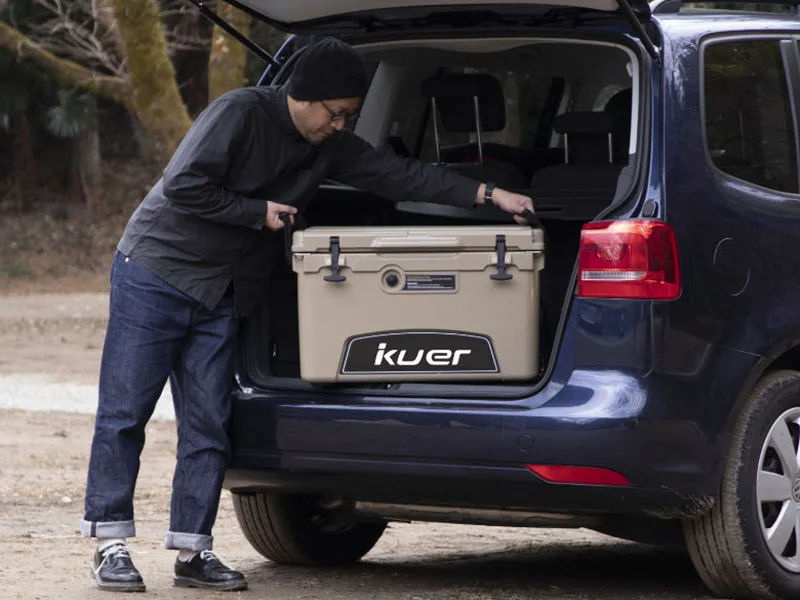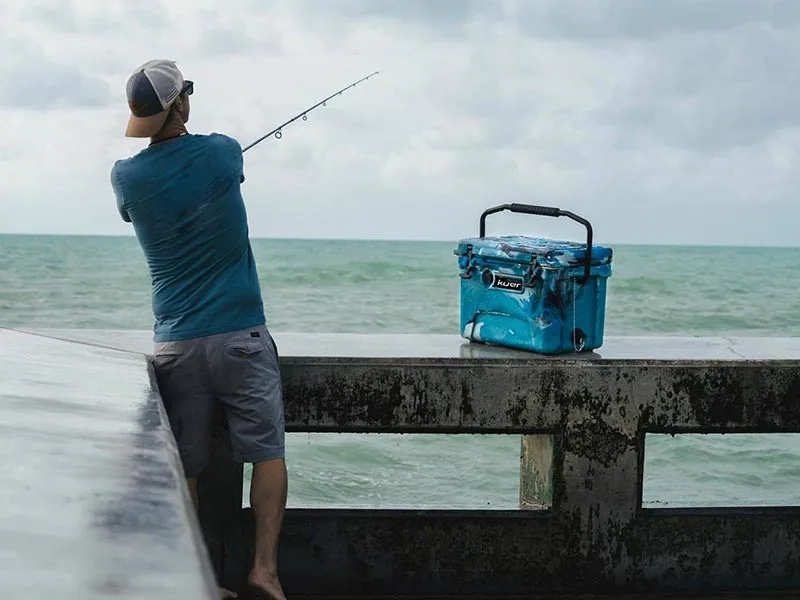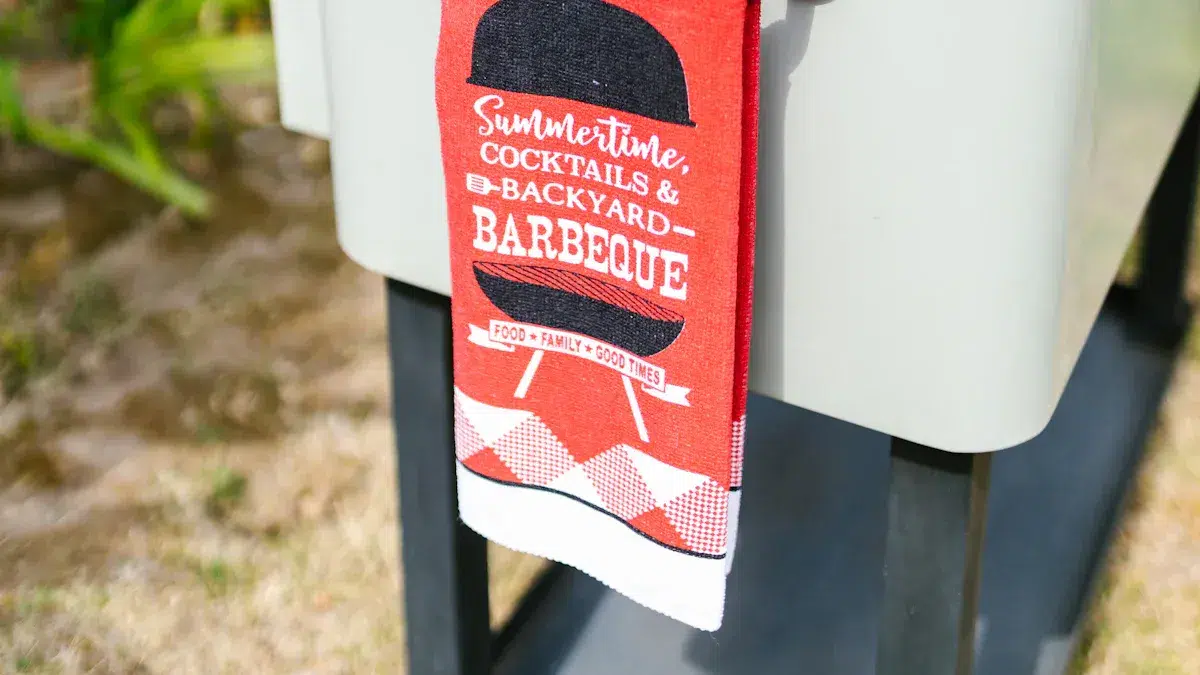
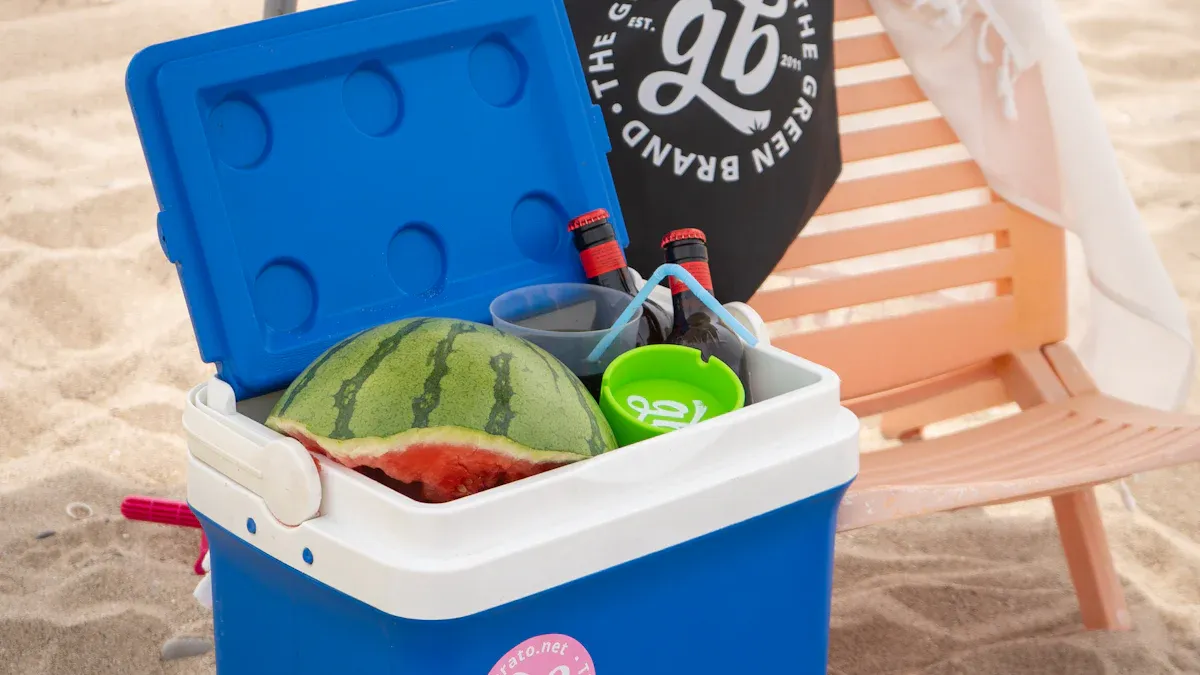
Keeping your food fresh isn’t just about taste—it’s about health and safety. Did you know foodborne illnesses affect 48 million people in the U.S. every year? That’s a staggering number! A cooling hard sided lunch cooler can help you avoid these risks by maintaining safe temperatures for your meals. It’s a simple way to ensure your food stays fresh, whether you’re at work, school, or on the go.
Kuer, one of the leading cooler box manufacturers will provide you with a variety of outdoor ice chest cooler solutions.
Key Features of the Best Lunch Boxes
Cooling Efficiency and Insulation
When choosing a cooling lunch box, its ability to keep your food at the right temperature is crucial. You want your meals to stay fresh and safe, especially if you’re packing perishable items like yogurt or sandwiches. High-quality insulation plays a big role here. It helps maintain the internal temperature, keeping your food cool for hours.
Did you know? Experimental research shows that thermal insulation performance, including resistance to mold growth, significantly impacts cooling efficiency. Materials that resist fungal growth ensure better air quality and longer-lasting freshness.
Some lunch boxes use advanced insulation materials that are not only effective but also lightweight. For example, insulated models have been tested to retain temperatures between 53ºF to 57ºF after four hours, even with refrigerated items. This makes them perfect for both adults and kids who need their meals to stay cool during the day.
Size and Capacity for Different Needs
Not all lunch boxes are created equal when it comes to size. Think about what you usually pack. Are you preparing a hearty meal for work, or are you packing snacks for your kids? The best lunch boxes come in various sizes to suit different needs.
For families, larger options can hold multiple containers, drinks, and even freezable lunch bags for added cooling. On the other hand, compact designs are ideal for kids or anyone who prefers a lighter load. Look for models with adjustable compartments or stackable containers. These features make it easier to organize your food without squishing anything.
Material Safety and Durability
The material of your lunch box matters more than you might think. It’s not just about how long it lasts but also how safe it is for your food. Many of the best lunch boxes are made from BPA-free plastics, stainless steel, or food-grade silicone. These materials ensure your meals stay free from harmful chemicals.
| Certification/Standard | Description |
|---|---|
| BRC Global Standard for Packaging Materials | Ensures safety for direct food contact and compliance with packaging standards. |
| SGS-certified PFAS-free testing | Verifies that materials are free from harmful chemicals like PFAS. |
Additionally, certifications like FDA Extractable Lead & Cadmium testing and California Proposition 65 compliance guarantee that the materials meet strict safety standards. Durable lunch boxes also withstand daily wear and tear, making them a smart long-term investment.
Tip: Look for certifications like ASTM D3359 for adhesion and EU Regulation No. 10/2011 for plastics in contact with food. These ensure your lunch box is both safe and durable.
Portability and Ease of Use
A lunch box should make your life easier, not harder. Portability is key, especially if you’re carrying it to work, school, or outdoor activities. Lightweight designs with sturdy handles or shoulder straps are ideal. For kids, look for options with fun designs and easy-to-open lids.
Field tests have shown that insulated lunch boxes are not only effective at temperature retention but also durable. Harder-shelled models were dropped multiple times to test their leak-proof capabilities, and they held up well. This makes them great for active lifestyles or busy school days.
Pro Tip: Choose a lunch box or lunch bag with a compact design that fits easily into backpacks or totes. This ensures convenience without compromising on storage space.
Types of Cooling Lunch Boxes Explained
Choosing the right cooling lunch box can feel overwhelming with so many options available. Let’s break it down and explore the different types to help you find the perfect fit for your needs.
Insulated Lunch Boxes
An insulated lunch box is one of the most popular choices for keeping food fresh. These are designed with materials like dense foam or vacuum-sealed layers to trap heat or cold, maintaining your food’s temperature for hours. They’re perfect for both hot soups and chilled salads.
| Type of Lunch Box | Description |
|---|---|
| Insulated Lunch Box | Designed to retain food temperature for several hours, using a vacuum and dense foam to trap heat. |
Independent reviews highlight their performance in three key areas:
- Temperature Control: They excel at keeping food hot or cold for extended periods.
- Leakproof Performance: Many models pass water-leak tests, ensuring no messy spills.
- Design Features: They often include easy-to-clean interiors and compartments for better organization.
If you’re looking for reliability and versatility, this type is a great choice.
Gel Pack Lunch Boxes
Gel pack lunch boxes are another excellent option. These come with reusable gel packs that you freeze overnight. Once placed inside the lunch box, they keep your food cool for hours. They’re ideal for perishable items like dairy or deli meats.
The best part? You can use the gel packs in other containers too, making them a flexible and budget-friendly solution. Just remember to refreeze the packs after each use.
Electric Cooling Lunch Boxes
Electric cooling lunch boxes take things up a notch. These plug into a power source, like a car adapter, to actively cool your food. While they sound convenient, consumer tests reveal some limitations. For instance, most models struggle to maintain an internal temperature below 40°F after 20 minutes at room temperature. This means they may not be the safest option for long-term food storage.
If you choose this type, it’s best to use it for short trips or pair it with ice packs for added cooling.
Hybrid Cooling Lunch Boxes
Hybrid cooling lunch boxes combine the best features of insulated and gel pack models. They use advanced insulation materials along with built-in compartments for gel packs. This dual approach ensures maximum temperature retention, making them perfect for long workdays or outdoor adventures.
These lunch boxes are often lightweight and easy to carry, offering the convenience of portability without compromising on performance.
Tip: If you need a lunch box that adapts to different situations, a hybrid model might be your best bet.
Lunch Box Buying Guide: How to Choose the Right One
Choosing the perfect cooling lunch box can feel like a challenge, but it doesn’t have to be. By focusing on a few key factors, you can find one that fits your needs and keeps your meals fresh all day. Let’s dive into what you should look for.
Assessing Temperature Retention
Temperature retention is one of the most important features of a cooling lunch box. You want your food to stay cool and safe, especially if you’re packing items like dairy, deli meats, or fresh fruits for your kids. A good way to evaluate this is by checking how well the lunch box maintains its internal temperature over time.
Here’s a quick comparison of popular lunch box models and their performance in ice retention tests:
| Lunch Box Model | Percentage of Ice Loss After 8 Hours |
|---|---|
| Yeti Daytrip Packable Lunch Bag | 59% |
| Carhartt Insulated 2 Compartment Cooler | 66% |
| Igloo Modern Lunch | 81% |
| REI Packaway 6 Soft Cooler | 100% |
| Coleman Chiller Series Soft Cooler | 76% |
| Corkcicle Crush Proof Cooler | 86% |
| Built Prime Lunch Bag | 100% |
| Mier Adult Lunch Box | 78% |
| Sunnybird Insulated Rolltop Lunch Bag | 54% |
| PackIt Freezable Lunch Box | 100% |
| FlowFly Double Layer Insulated Cooler | 100% |
| Coobiiya Lunch Bag | 100% |
| Hydroflask 5L Carry Out Lunch Box | 88% |
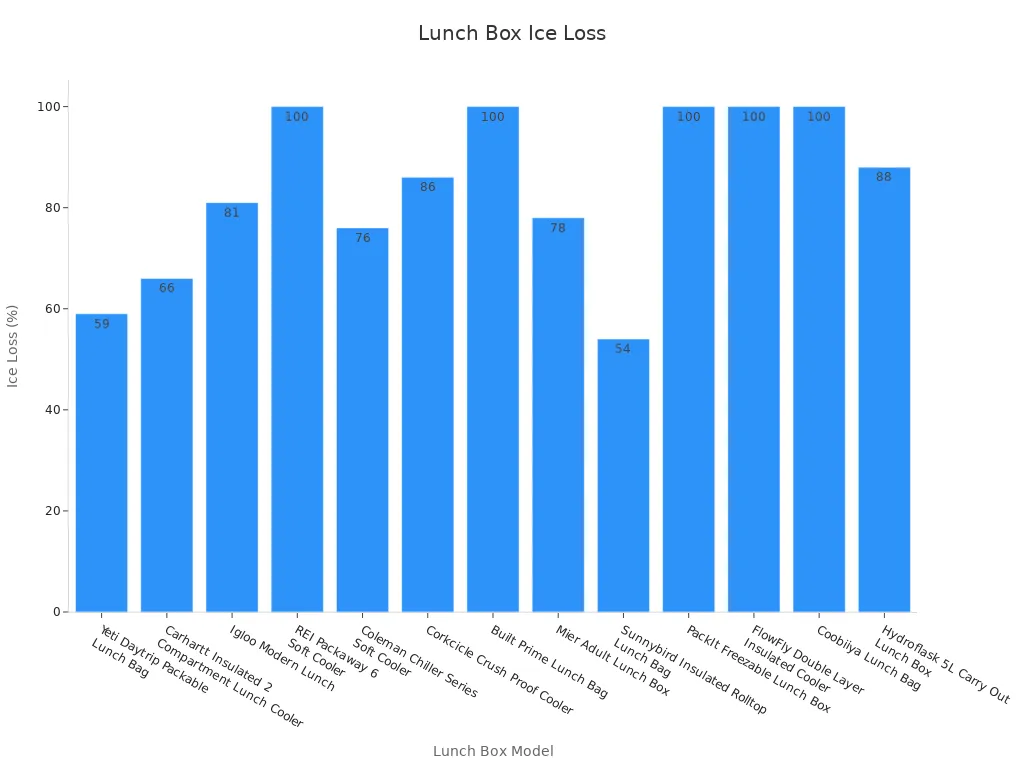
When comparing options, look for models with lower ice loss percentages. These will keep your food cooler for longer, making them ideal for long workdays or school lunches for your kids.
Evaluating Build Quality and Features
A durable lunch box is a smart investment. You don’t want something that falls apart after a few uses. High-quality materials and thoughtful design features can make all the difference. Manufacturers often test lunch boxes for durability using metrics like defect rates, yield, and customer feedback.
Here’s a breakdown of some common quality assurance metrics:
| Metric Type | Description |
|---|---|
| Cost of Poor Quality (COPQ) | Tracks internal failures like scrap and rework, and external failures like warranty claims. |
| Cost of Good Quality (COGQ) | Includes appraisal costs (inspection, testing) and prevention costs (training, quality planning). |
| Defects | Measures issues like defective parts per million (DPPM) and defects per million opportunities (DPMO). |
| Customer Complaints and Returns | Helps identify areas for improvement based on user feedback. |
| Scrap | Indicates material waste and highlights inefficiencies in production. |
| Yield | Assesses process effectiveness, including first-pass yield (FPY) for initial quality checks. |
When shopping, look for lunch boxes made from BPA-free plastics, stainless steel, or food-grade silicone. These materials are not only safe but also long-lasting. Features like leak-proof seals, sturdy zippers, and reinforced handles add to the overall durability.
Tip: If you’re buying for kids, choose a lunch box with easy-to-open lids and fun designs. It’ll make lunchtime more enjoyable for them!
Reading Reviews and Ratings
Online reviews can be a goldmine of information. They give you real-world insights into how a lunch box performs. Look for reviews that mention temperature retention, durability, and ease of use. Pay attention to any recurring complaints, as these could indicate potential issues.
Ratings can also help you narrow down your options. A lunch box with consistently high ratings is usually a safe bet. Don’t just focus on the overall score—read the detailed reviews to understand why people love (or dislike) a particular model.
Pro Tip: Check for reviews from parents if you’re buying for kids. They often highlight practical details like how easy it is to clean or whether it fits into a standard backpack.
Testing for Practical Usability
Before committing to a purchase, think about how you’ll use the lunch box daily. Is it easy to carry? Does it fit into your bag? Can it hold enough food for your needs? These are all important questions to ask.
If possible, test the lunch box in person. Open and close the zippers, check the compartments, and see how it feels to carry. For online purchases, look for videos or detailed photos that show the product in use.
Note: A lunch box with adjustable compartments can be a game-changer. It lets you organize your food without worrying about spills or squished sandwiches.
By keeping these factors in mind, you’ll find a cooling lunch box that’s perfect for your lifestyle. Whether it’s for work, school, or outdoor adventures, the right choice will make your meals more enjoyable and stress-free.
Choosing the right cooling lunch box can make a big difference in keeping your meals fresh and enjoyable. Focus on cooling efficiency, size, material safety, and usability to find the perfect fit for your lifestyle. High-quality options offer durability, advanced insulation, and convenience, ensuring your healthy foods stay fresh for hours. Take time to test features and prioritize your needs. A well-made lunch box is a smart investment that pays off with long-term satisfaction.
FAQ
How long can a cooling lunch box keep food fresh?
Most cooling lunch boxes maintain freshness for 4-8 hours. Insulated models or gel packs extend this duration, depending on external temperatures and food type.
Are cooling lunch boxes safe for kids?
Yes, cooling lunch boxes made from BPA-free materials are safe for kids. Look for easy-to-open lids and fun designs to make them kid-friendly.
Can I use gel packs with any lunch box?
Absolutely! Gel packs work with most lunch boxes. Just freeze them overnight and place them inside to keep your food cool for hours.

